Mirror journals – a new track in open access publishing?

With a definitive shift towards open access in the academic publishing landscape, journals and publishers are taking new initiatives to provide more avenues to the open access route. A recent development in this direction is the concept of mirror journals. Pioneered by Elsevier, this new publication model has stirred up discussions in academic circles.
What are mirror journals?
As the name suggests, mirror journals are mirror images of existing, established journal titles. They are published by the same publisher, have the same editorial board, peer review process, and selection criteria as the parent journals. In fact, authors submit their manuscript to the same website as the parent journal, and they can choose whether to publish in the parent journal or the mirror journal only after acceptance. This ensures that the decision to publish in a particular format does not impact the peer review and editorial decision in any way. Elsevier currently has 40 open access mirror journal titles.
A mirror journal also has the same title as the parent journal, distinguished only by an X at the end of the name (e.g, Journal of Water Research X). It has a separate ISSN number and citation metrics. According to Peter Harrison, Senior VP of Physical Sciences Journals at Elsevier, the indexation of mirror journals in MEDLINE, PubMed Central, and Scopus is assured if the parent journals are already indexed. The main difference is in the business model: mirror journals are fully open access while the parent journals follow the traditional subscription or hybrid model.
Why are mirror journals needed?
Mirror journals emerged as a response to criticism directed at hybrid journals. This is the model in which a subscription-based journal makes some articles open access upon payment of a publication fee by the author. Hybrid journals were first launched around a decade ago with the hope of a fully open access future for scholarly publication. The idea however, did not live up to expectations. While the number of hybrid journals continued to grow (from 2,000 in 2009 to 10,000 in 2016), the average proportion of OA articles in hybrid journals persistently remained low ( 4.3 per cent to 10 per cent at most). Therefore, libraries had to continue paying high subscription charges as most of the content of hybrid journals was still behind a paywall.
In 2018, Plan S was launched to help libraries cope with the challenge posed by rising subscription costs. The plan mandated that scientific publications resulting from publicly funded research must be published in fully open access journals. Since hybrid journals were not fully OA, they were not compliant with Plan S. This led to the emergence of mirror journals as a new publication model.
In an article titled “Warning on Mirror Journals” published in Inside HigherEd, the author David Matthews points out that, “Some publishers see mirror journals as a way of allowing researchers to continue to submit to a near identical journal while remaining Plan S compliant.” However, as per a recently released guidance on the implementation of Plan S, mirror journals too will be considered non-compliant. But before we come to that, let’s see what this model has to offer to publishers and authors.
What’s in it for publishers?
As an increasing number of funding bodies are moving toward OA publishing, publishers are becoming increasingly aware that they might ultimately need to flip to OA. Setting up a new OA journal title with a new editorial board, a new website, and completely new processes in place would involve considerable costs. By contrast, mirror journals offer a more viable way to gradually transition into complete OA as the subscription journal would continue to provide a steady stream of revenue till the time the OA mirror journal makes enough money. Eventually, the mirror journal can be merged with its parent and the transition to open access can be complete.
Unlike hybrid journals, the mirror journal model seems more transparent. Hybrid journals received a lot of criticism because the model left room for journals to “double-dip,” that is, receive subscription fees from libraries as well as article processing charges (APCs) from authors. With mirror journals having a complete segregation in terms of content and business model, double dipping may not be as big a concern. As Angela Cochran, Managing Director and Publisher at the American Society of Civil Engineers (ACSE), observes in an excellent analysis of the topic in The Scholarly Kitchen: “These are two journals that can have two separate business models. If one part goes subscription only and the other goes OA only, it’s easier to leave behind the concerns of double-dipping.”
What’s in it for authors?
Mirror journals provide more academic freedom to authors to publish in journals of their choice. However, the fact is that academia still lays a great store by the perceived prestige of a journal. Therefore, it is natural that researchers would like to have publications in journals that are recognized by the people who work in the same field as them. Unfortunately, many of the prestigious journals in most fields are subscription-based. Funding mandates around OA limit researchers’ choice of target journals and often do not allow them to publish in their preferred venues. Mirror journals offer a solution to this problem. As Angela Cochran points out: “At the very least, mirror journals allow Plan S authors to benefit from the existing reputations of the original titles[…].”
The catch
In a relatively recent revision, Plan S has made it clear that it will allow publication in a mirror journal only if it is part of a “transformative agreement,” a contract by which the journal will become fully open access within an agreed transition period (by 2024). Additionally, the contracts of such agreements need to be publicly available, and must be concluded by 2021.
Another thing that authors need to know about mirror journals is that most of them do not yet have an impact factor. So if the author’s institution lays emphasis on the impact factor, which again, for better or worse, many institutions still do, a mirror journal might not be a good choice.
With these challenges, the future of mirror journals is uncertain. If mirror journals are not compliant with the Plan S requirements, they might not have too many takers. So far, mirror journals seem to be largely an interim arrangement to provide established subscription-based journals with a financially viable route for a flip to complete OA. Whether and to what extent mirror journals can facilitate the much-awaited transition to fully accessible research remains to be seen.
References:
- Are mirror journals a better path to the open access flip?
- What are mirror journals and can they offer a new world of open access?
- Mystery of mirror journals
- Are Mirror Journals Just Hybrid Open Access Journals In Disguise Or Are They A Viable Route To The Open Access Future?
Related reading:
- INFOGRAPHIC: Open access explained: Why publish open access?
- Will a manuscript published in a mirror journal of a reputed parent journal be considered less important?
- A skeptic’s guide to open access
- Understanding open access publishing and its chances for sustainability






